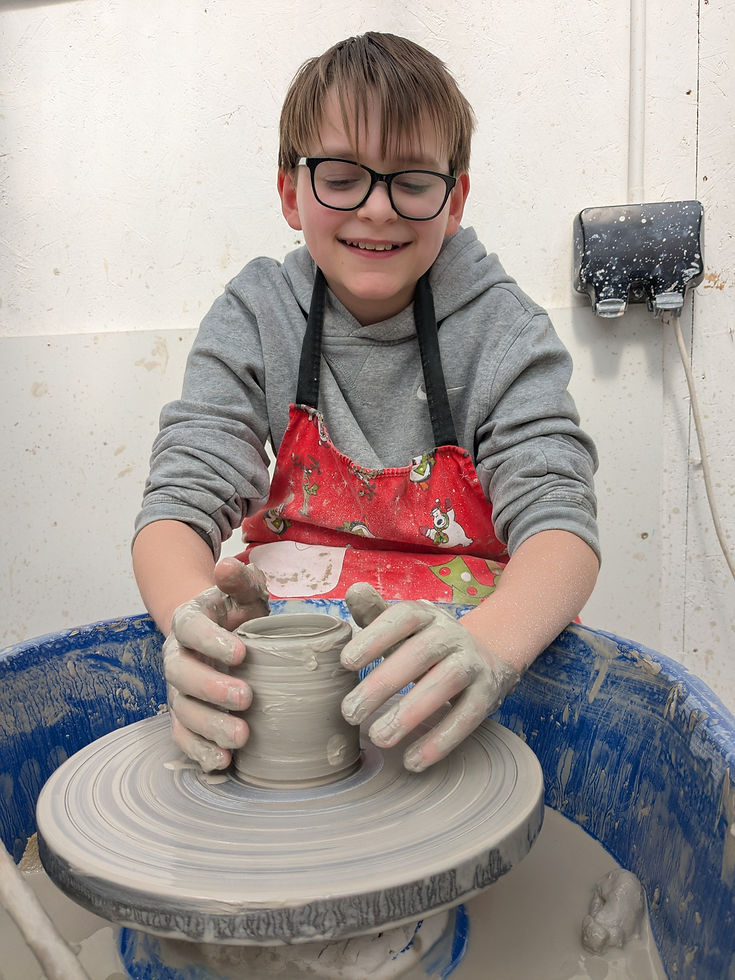
The development of the pottery wheel.
- potterydayz
- Apr 30
- 2 min read
The pottery wheel stands as one of humanity’s earliest mechanical innovations, revolutionizing ceramic production and artistic expression. Its development marks a significant shift from manual hand-building techniques to more efficient and symmetrical methods of shaping clay.
🕰️ Historical Timeline of the Pottery Wheel
c. 4500–4000 BCE: Emergence of the "tournette" or slow wheel in the Near East, a simple turntable manually rotated to assist in coiling pots.
c. 3000 BCE: Introduction of the fast wheel, possibly by the Sumerians, incorporating a flywheel mechanism that allowed for continuous spinning and the technique of "throwing" clay.
c. 2000 BCE: Adoption of the heavy flywheel in Minoan Crete, enhancing rotational speed and stability.
c. 8th–9th centuries CE: In Britain, the production of Ipswich ware marks the first mass-produced, wheel-turned pottery in post-Roman times.
19th–20th centuries: Industrial Revolution introduces mechanized and electric pottery wheels, increasing production efficiency and consistency.
🌍 Global Impact and Regional Variations
The pottery wheel's adoption varied across civilizations:
Mesopotamia: Pioneered early wheel techniques, facilitating mass production for urban populations.
Egypt: Utilized both slow and fast wheels, with evidence of wheel-thrown pottery as early as the 4th Dynasty (c. 2613–2494 BCE).
China: Advanced wheel technology contributed to the creation of fine porcelain, a hallmark of Chinese ceramics.
Europe: The kick wheel became prevalent, allowing potters to use their feet to spin the wheel, freeing their hands for shaping.
Americas: Pottery was traditionally hand-built; the wheel was introduced post-European contact but remains unused in some indigenous practices to preserve cultural heritage.
The evolution of the pottery wheel reflects humanity's continuous pursuit of innovation, enhancing both the functionality and artistry of ceramic creations. From its humble beginnings to modern electric versions, the pottery wheel remains a testament to our enduring relationship with clay and craftsmanship.


Kommentarer